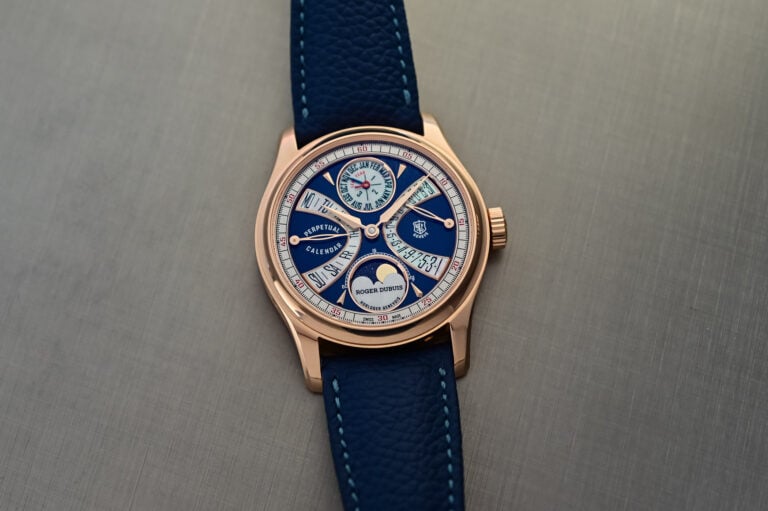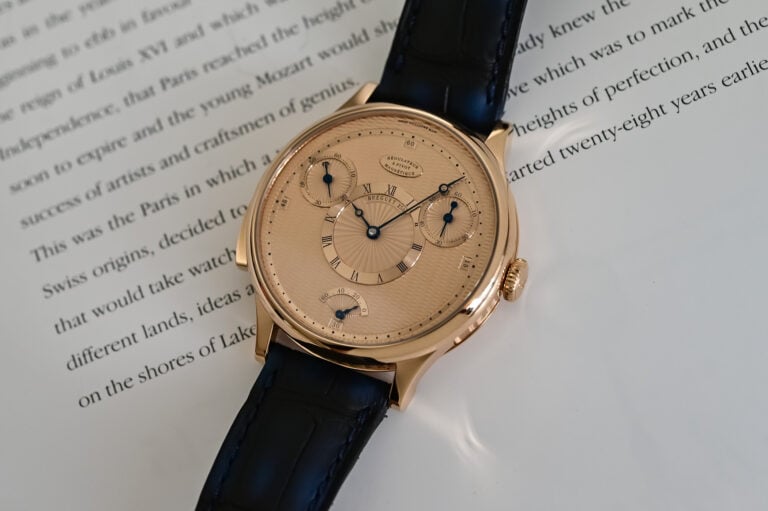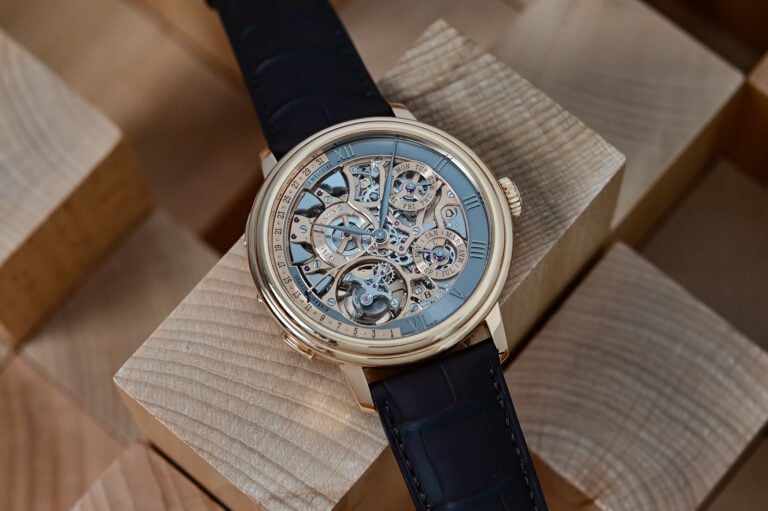A seal made from rubber, plastic or other materials to prevent water, dust and other contaminants from entering the watch case.
Transmits power from the mainspring to the escapement, balance wheel and complications via interconnecting toothed wheels and pinions.
Toothed wheels that interconnect to transmit energy and control speed from a power source.
Greenwich Mean Time is the standard mean solar time at the Royal Observatory in Greenwich, London, counted from midnight (00:00 hour). It is used to calculate the time divided into 24 timezones spread across the world, with the Zero-zone being based in Greenwich, London. Traveling east or west would mean to add or subtract one hour according to the determined timezones. Timezones differentiated according to GMT standards do not follow exact geographical longitudes. In 1973, it was succeeded by the more exact UTC (Coordinated Universal Time). In watchmaking, both GMT and UTC are used to indicate a watch that can display a second timezone, although mechanically there’s no difference.
A thin layer of 14K gold or higher that’s fused to metal at a minimum thickness of 0.5 microns. This gives the appearance of solid gold at a small fraction of the price.
A thin bar of metal within a watch movement that’s struck by a small hammer to produce a specific note, either to indicate the time, sound an alarm or play a melody.
A device to regulate the speed of a striking mechanism like a Grande Sonnerie or Minute Repeater. It’s often shaped like a rotating wheel with weights and spins at a certain speed, regulating the gear train for the striking mechanism once activated.
A finishing technique, usually in straight or circular patterns to decorate movement parts or (sections of) a dial. The effect gives a component a finish with very fine stripes.
Meaning “Great Fire” – A type of dial finishing where powdered silica and other compounds are heated on a metal base at very high temperatures in successive layers (melting and fusing the particles), requiring multiple reheats that ultimately creates a deep, glassy surface. It’s a very difficult process with a high failure rate and each return to the kiln jeopardizes the previous layers. Layers are used for a desired thickness and also for multiple colors.
French for “grand strike” – A mechanical watch complication with both a quarter striking mechanism and a repeater. An internal gong is struck every quarter hour, audibly indicating which quarter hour it is. A second gong then indicates the number of hours. For example, at 5:15 it would strike a high-pitched gong once (first quarter hour) and then a lower-pitched gong five times (fifth hour).
A technique to make a watch dial, originating from the 1800’s yet rarely used these days. A grenage dial is made of solid silver, with finely engraved decorations like numerals or a minute track. The recessed engravings are hand filled with lacquer, which is polished with diamond-paper when hardened.
A decorative, labor-intensive technique using a rose engine (hand-operated lathe) that engraves intricate geometric patterns into watch dials, cases and even parts of a movement. Patterns include solar, barley, hobnail, sunburst and many more. Also known as engine turning.



